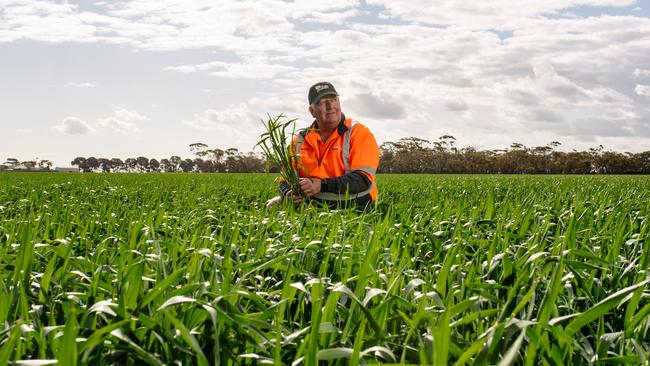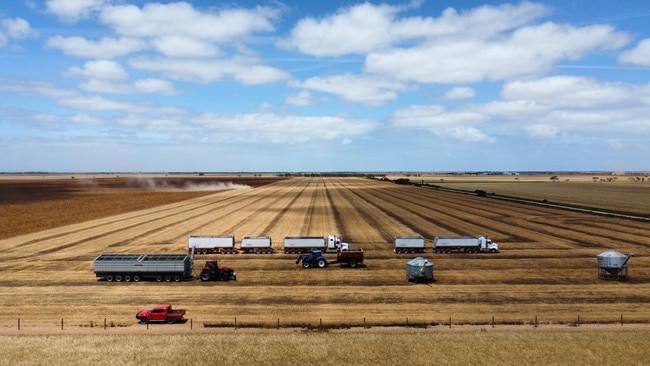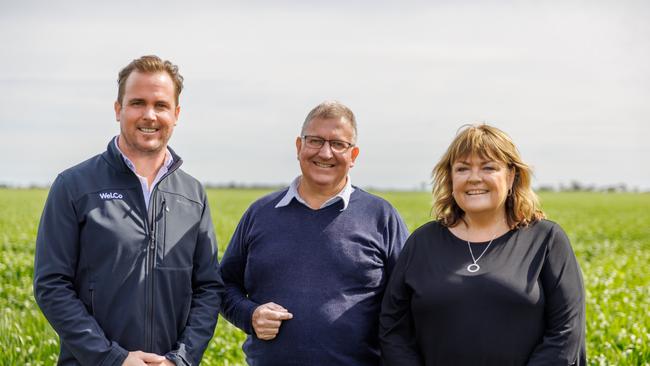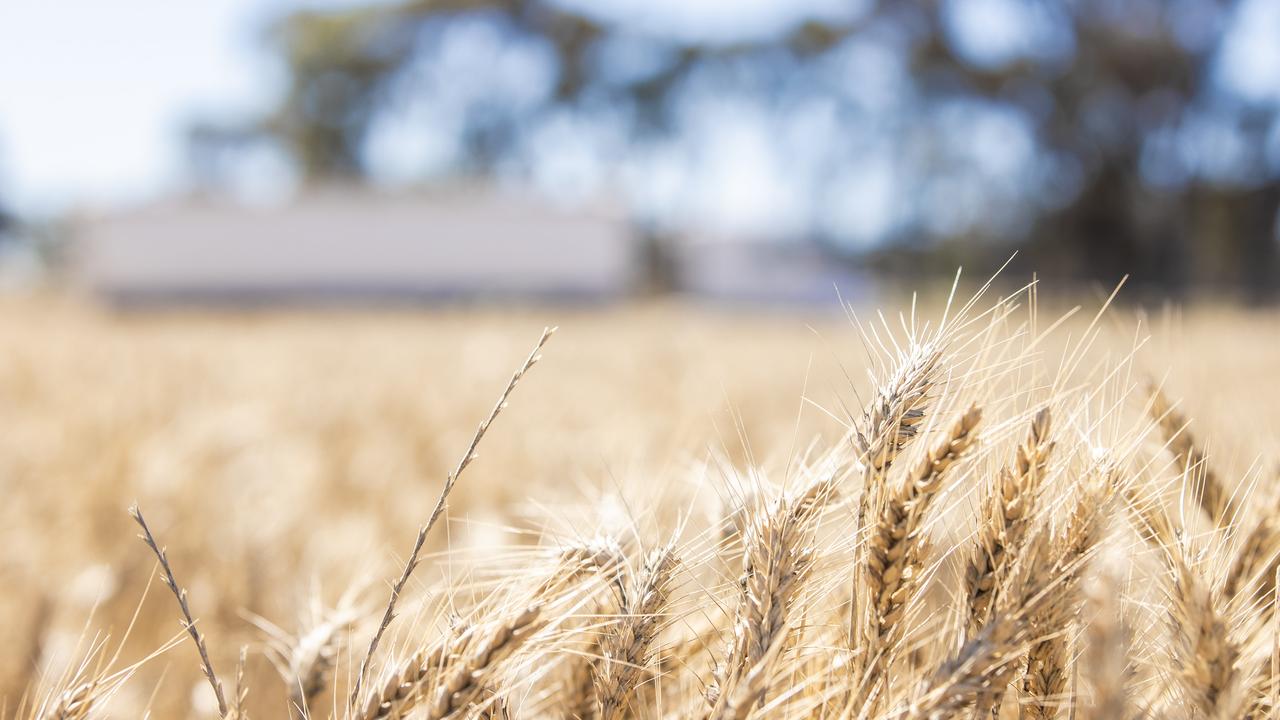Konzag Grains works with nature, tech to maximise wheat yields
Richard Konzag has had plenty of doubters, but the seasoned grain grower’s innovative approach delivers impressive returns.

Standing on Richard Konzag’s 2500ha dryland cropping property is an intact, freestanding cottage built by one of Mallala’s first white settlers 180 years ago.
With average annual rainfall of just 395mm, the arid, arable country of the Northern Adelaide Plains naturally preserves things of stone and wood.
But this climate can make growing grains, with high evaporation and underground water too deep and brackish for irrigation, challenging.
So, when Richard became the sixth generation of Konzags to take on the family cereal, pulse and oilseed farm, 60km north of Adelaide, in the mid-1980s, he set about renegotiating the clan’s relationship with the land.
By combining those generations of knowledge with the latest business principles and technology, he is conquering that baking summer sun.

As expansion is difficult in the tightly held area, he knew the only way to create a more sustainable, efficient and profitable business was by trapping moisture and improving soil quality.
So, the now 59-year-old retained waist-high standing stubble in fields flat as a billiard table with occasional hollows, the remnants of an ancient watercourse, when few dared.
The tactic worked to trap moisture and this helped the operation expand over the years, but things went into overdrive for Konzag Grains following paddock tests a year apart.
SHAPE-SHIFTING DECISION
Sowing wheat in 2014 using a dealer demo of the John Deere 1890 single disc seeder, with 19cm row spacings, eventually harvested 432 grain heads per square metre compared to the 306 heads produced by the Conserva Pak knifepoint seeder, with 30cm row spacings, he had used for a decade.
So Richard purchased a JD 1890.
The more closely spaced 19cm rows not only provided higher yield potential but increased crop competition with weeds and plant biomass.
Then he ran a second paddock test, this time in 2015, running a neighbour’s stripper front, used to bale hay, alongside his draper front. He found 48mm more plant-available water in the stripper straw soil, after seeding wheat, compared with the draper straw soil.
A draper has a knife on the front that cuts some straw with the heads and puts both into the harvester, while a stripper front uses rows of fingers on a spinning rotor to pluck grain heads and pods from straw, leaving the straw behind.
So he swapped the draper for a stripper, which, like mulch over a garden bed, increases residue left in the paddock to exponentially reduce evaporation and erosion and increase soil carbon.
In adopting the disc seeder and stripper front together, Richard placed himself in the 1 per cent of farmers using a “disc-stripper” Australia-wide at the time. It is now closer to 5 per cent.
After the conquest has come the inquest and farmers travel from across the land to listen and observe, in a white coat and clipboard kind of way, his cutting-edge technique.
“We have had plenty of people come to look at our farming system, from those running something similar to those considering a new system and probably those thinking what we’re doing is ridiculous,” he said.
“If my father and grandfather saw us sowing into a standing wheat stubble, they would think we were certifiable, that you could only get through it with a box of matches.
“I guess we’d just say look at the yield now compared to when I first started. Barley was 18 bags to the acre in 1982 and Dad said: ‘You’ll never grow a better crop than that’.
“But as technology has improved and varieties improved with research and development the last yields were over 30 bags.”
The current winter crop promises to be his best yet with lentils now yielding 3.4 tonnes a hectare, compared to the longstanding average yield of 1.7 t/ha.
The disc-stripper technique also reduces machinery wear and tear and, with less material being processed, fuel consumption at harvest. The main drawbacks are fewer herbicide options and that mice and insects love the extra soil cover.
The highest expense for Konzak Grains is fertiliser, with the 2022 outlay on chemicals, spiralling in price, to mid-November more than his entire 2021 expenditure on inputs.
Richard uses sulphate of ammonia fertiliser before sowing cereals for starter nitrogen and to increase soil sulphur levels, DAP or MAP fertilisers at seeding and urea in the crop. His other main inputs are herbicides, fuel and fungicides.

A FAMILY AFFAIR
One of Richard’s farming philosophies is to “care for the soil and it will take care of you”, his life motto a drive to be the best provider he can.
Because, for him, it is all about family.
Richard’s partner in business and life, wife Trish, holds the administration together while son Ryan recently returned home after graduating with a Bachelor of Agribusiness from Geelong’s Marcus Oldham College and fresh ideas of his own.
“Hopefully he will exceed what I do. Being able to provide for my family and live a nice lifestyle has driven a lot of what we have done, but it has been equally important to do so as a good custodian,” he said.
Nephew Simon Lutt was appointed farm manager with Richard being increasingly drawn away from the farm.
Richard’s desire to “give back to the industry I love so much” and a willingness to share his learnings has seen him progress through industry ranks over the past two decades.
He served on the Advisory Board of Agriculture, the governing body of farmer member organisation the Agricultural Bureau of South Australia, for six years until 2011 and then seven years on the GRDC’s Southern Panel, revelling in the opportunity to ensure what growers wanted from research was being investigated.
The 2015 Australian Institute of Company Directors graduate now sits at the nexus of growers, government and industry as a Grain Growers Ltd board director.
“There are lots of opportunities with the number of consumers in high income countries who will demand Australian products expected to increase by three billion people by 2050,” he said.
“But it is a concern for me that the benefits of sustainability are not going back to the farmer. And that our supply chains are not efficient enough to get all the grain out of the regions and through the ports, it needs to improve and when the basis is so high it is a bitter pill to swallow.”
THE LAND
With northern plains land rarely on the market, Richard puts a tender in for most properties that come up for lease and sometimes gets lucky. His operation is consequently spread across the region and he farms a variety of soil types, from grey calcareous Mallee loams to heavier red clays and loamy sands.
This variation makes nutrient-rich bio solids an important part of preparing the ground for sowing.
Generally he will grow less durum wheat on the driest country but is not scared to grow lentils in wetter zones.
Richard usually sows 100kg of durum per hectare for a 3.4t/ha yield and 90kg of wheat for a 3.5t/ha yield. This year the team planted 1000ha of wheat, 1000ha of lentils and about 450ha of durum.
So far the 2022 winter harvest is producing lentils and wheat at almost double the long-term average, “we are harvesting excellent crops, it really is amazing”.
In other years, Konzag Grains dabbles in canola, barley, oaten hay, chick peas and faba beans.
Richard has always embraced technology.
“All the agtech, drones, apps on a mobile phone have been incredibly useful and toys are great, jumping in a new tractor with all the bells and whistles,” he said.
“But, while I am not writing how much seed we need to save on the back of a barn door like my dad did, whatever the generation, it is still important to know your paddocks intimately.”
THE FUTURE
Richard keeps a constant eye trained on business opportunities and the family recently rolled out a logistics side hustle for income security, particularly during drought times.
Meanwhile, in partnership with former AFL player Andrew Welsh, the clan has a masterplan in hand that carves up 40ha of their farming land, rezoned residential in 2015, for 500 new homes.
The venture would help address Mallala’s housing shortage and declining population of 900.
Meanwhile, a weathered eye always remains on his land.
“Looking at a potentially high-yielding crop and thinking this is the team’s hard work through the year is the part that gets me out of bed every day,” he said.
“Sustainable is a trendy word now, but it has been a word around our farm for 40 years.”
Like that little stone cottage, Richard has always played the long game.





